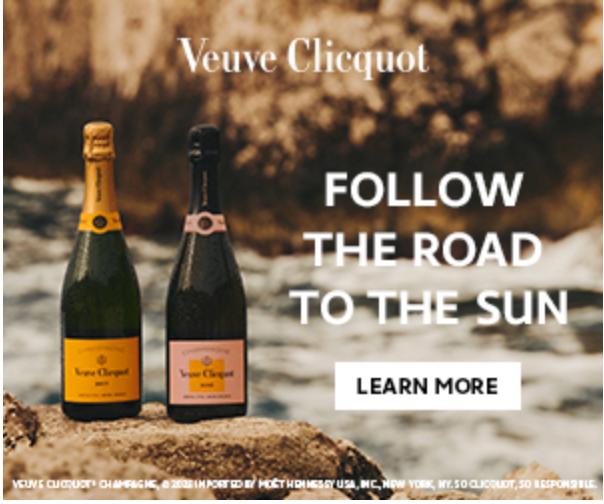Owner Alex Sarkissian and Chef Vartan Abgaryan Celebrate Momed Atwater Village ’s 10th Anniversary With Four Renowned Chefs & Monthlong Immigrant Chef Dinner Series
Celebrate Momed Atwater Village ’s 10th Anniversary with Immigrant Chef Dinner Series
Momed in Atwater Village is turning ten this September, and to celebrate a decade of culinary excellence, Owner Alex Sarkissian and Chef Vartan Abgaryan are bringing back the beloved “Immigrant Chef Series.”
This special event, kicking off on September 9th, will feature four extraordinary Monday night dinners, each showcasing the talents of renowned Los Angeles chefs with rich immigrant backgrounds.
Starting September 9th and continuing each Monday throughout the month, guests can indulge in a unique Seven-Course Tasting Menu ($80 per person) served family-style, featuring dishes crafted in collaboration with Chef Abgaryan.
Each evening will highlight the diverse cultural and culinary heritages of the guest chefs, creating a vibrant tapestry of flavors that truly celebrates the richness of Los Angeles’ immigrant communities.
The Momed 10th Anniversary “Immigrant Chef Series” lineup includes:

Monday, September 9th
Chef Susan Yoon
Orsa & Winston, Wolfdown, 71Above

Monday, September 16th
Chef Nakul Mahendro

Monday, September 23rd
Chef Wesley Avila
Guerilla Tacos, KA’TEEN, MXO Steakhouse

Monday, September 30th
Chef Vivian Ku

Complementing the culinary experience, guests can also enjoy Five Specialty Cocktails and Five Specially Selected Wines by the glass, all priced at just $10 each.
But the celebration doesn’t stop there!
To keep the festivities going, Momed will offer Happy Hour “all night” at the bar from Sunday through Thursday all throughout September.

Additionally, in the spirit of giving back, Momed will donate 5% of the proceeds from each dinner to five organizations committed to immigrant and refugee affairs: Armenian Relief Society (ARS), Immigrant Center for Women and Children (ICWC), International Rescue Committee (IRC),Legal Aid Foundation of Los Angeles (LAFLA), and the Coalition for Humane Immigrant Rights of Los Angeles(CHIRLA).

Momed’s 10th Anniversary “Immigrant Chef Series” promises to be a flavorful and festive celebration of culture, community, and culinary artistry.
Don’t miss this special event and mark your calendars and make your reservation today!
For more information on Momed’s 10th Anniversary “Immigrant Chef Series” coming up on Monday, September 9th, 2024, Monday, September 16th, 2024, Monday, September 23rd, 2024, and Monday, September 30th, 2024, from 5:00 pm to 9:30 pm.
Please visit www.AtMomed.com to make your reservations, and for further information call Momed directly at 323.522.3488.
About Momed:
Momed, owned by Alex Sarkissian and short for “Modern Mediterranean,” offers a fresh take on the diverse flavors of the Mediterranean basin, emphasizing seasonality and sustainable ingredients. Since opening its doors in 2014, Momed Atwater Village has become a cherished dining destination in Los Angeles, known for its warm ambiance, inventive cuisine, and commitment to community. With Chef Vartan Abgaryan now at the helm, Momed continues to push culinary boundaries while honoring its Mediterranean roots.
About Chef Vartan Abgaryan:
As a child growing up in Los Angeles, Vartan Abgaryan was deeply moved by the way his family’s Armenian American culture celebrated all occasions, both happy and somber, with food. Inspired by the pure joy of cooking and how food brought many generations together, Abgaryan decidedly embarked on a career in the culinary realm. Educated at Le Cordon Bleu, Abgaryan graduated in 2004 and went on to cook at the famed Andre Soltner restaurant Lutece for one and a half years. In 2006, he moved back to the West Coast to be closer to his family, where he worked at Red Pearl Kitchen, followed by three years as Executive Chef at A Restaurant in Newport Beach. He then headed inland to accept the position of Executive Chef at Public Kitchen and Bar at the Hollywood Roosevelt Hotel, where he received 2-stars from the Los Angeles Times food critic and was mentioned as a ‘Restaurant to Watch’ in Esquire magazine by Food Writer and Critic John Mariani.
In 2012, Abgaryan joined the Eastside’s iconic Cliff’s Edge as Executive Chef. Here, he successfully took the eight-year-old neighborhood restaurant and made it relevant again. At Cliff’s Edge, Abgaryan became known for his highly seasonal approach to ingredients and his stunning presentation of dishes – Eater Los Angeles’ Matthew Kang commented that his dishes were “among the most beautiful plating in the city.” In 2014, Cliff’s Edge was awarded three stars by LA Weekly’s Restaurant Critic, Besha Rodell.
After a successful run, he elevated his role, quite literally, by opening 71Above – the highest restaurant west of the Mississippi, in July 2016. Since opening, the restaurant has received great critical acclaim and put Abgaryan on L.A.’s culinary heat map. Under his hand, 71Above was awarded 3-stars by LA Weekly, and Los Angeles Magazine named it ‘one of the Top Ten New Restaurants of 2016,’ with Critic Patrick Kuh remarking that “the experience is luxury that reflects on-point execution.” The Los Angeles Times’ beloved Jonathan Gold called his Suckling Pig dish “something out of a charcuterie dream.”
After serving over 300 diners a night at elaborate helicopter-hovering heights, Abgaryan had become one of the city’s most talented and respected chefs. When an opportunity presented itself to bring a refined culinary experience to Abbot Kinney Boulevard, considered by many to be “America’s coolest block,” he took it. Abgaryan’s culinary endeavor, Yours Truly, with partners Dave Reiss (formerly of Salt Air) and Paul Pruitt (Founder of New School), allowed him to focus less on the number of guests and work within a more intimate dinner setting. Continuing to build dishes blending flavors from many cultures, Abgaryan’s dinner menu exhibited a multi-cultural approach to each dish, combining ingredients from the Middle East, Asia, and Europe.
In February 2023, Abgaryan took on a new challenge as the Chef at Momed in Atwater Village, where he continues to bring his creative vision and dedication to seasonal, culturally rich cuisine.




